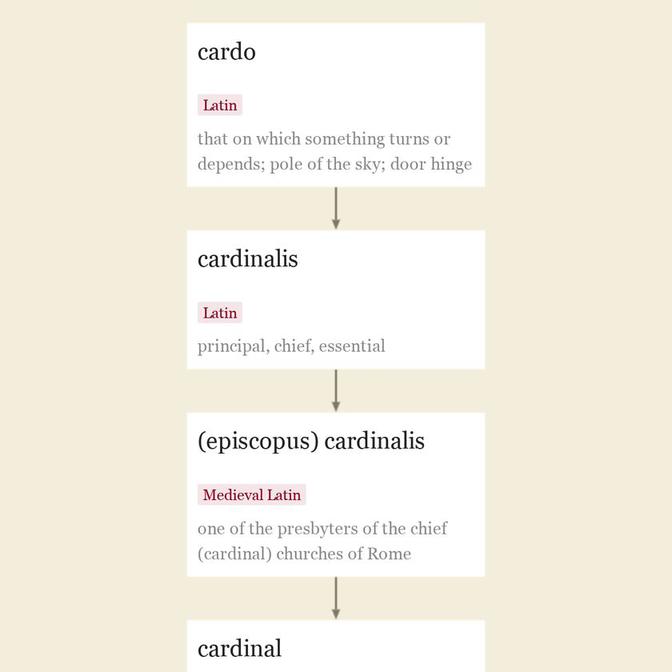cardinality (n.)
1520年代,“红衣主教的状态”,源自于 cardinal(n.)+ -ity。数学意义来自于1935年(参见 cardinal(adj.))。
最早记录年份: 1520s
cardinality 的相关词汇
cardinal (n.)

早在12世纪初,“构成神圣学院的教会王子之一”,源自中世纪拉丁语 cardinalis,最初作为名词“罗马主要(cardinal)教堂的长老之一”,缩写为 cardinalis ecclesiae Romanae 或 episcopus cardinalis,源自拉丁语 cardinalis(形容词)“主要的,首要的,基本的”(参见 cardinal(形容词))。
北美洲的鸣禽(Cardinalis virginianus)可追溯到1670年代,因其鲜红色而得名,类似于红衣主教的红袍。
-ity
这个词缀用于从形容词中构成抽象名词,表示“成为______的状态或品质”,源自中古英语的 -ite,来自古法语的 -ete(现代法语为 -ité),直接源自拉丁语的 -itatem(主格为 -itas),表示状态或品质的后缀,由 -i-(来自词干或连接词)和常见的抽象后缀 -tas 组成(参见 -ty(2))。
Roughly, the word in -ity usually means the quality of being what the adjective describes, or concretely an instance of the quality, or collectively all the instances; & the word in -ism means the disposition, or collectively all those who feel it. [Fowler]
大致上,以 -ity 结尾的词通常表示形容词所描述的品质,或具体的品质实例,或所有实例的集合; 以 -ism 结尾的词表示倾向或所有感受到这种倾向的人的集合。[福勒]